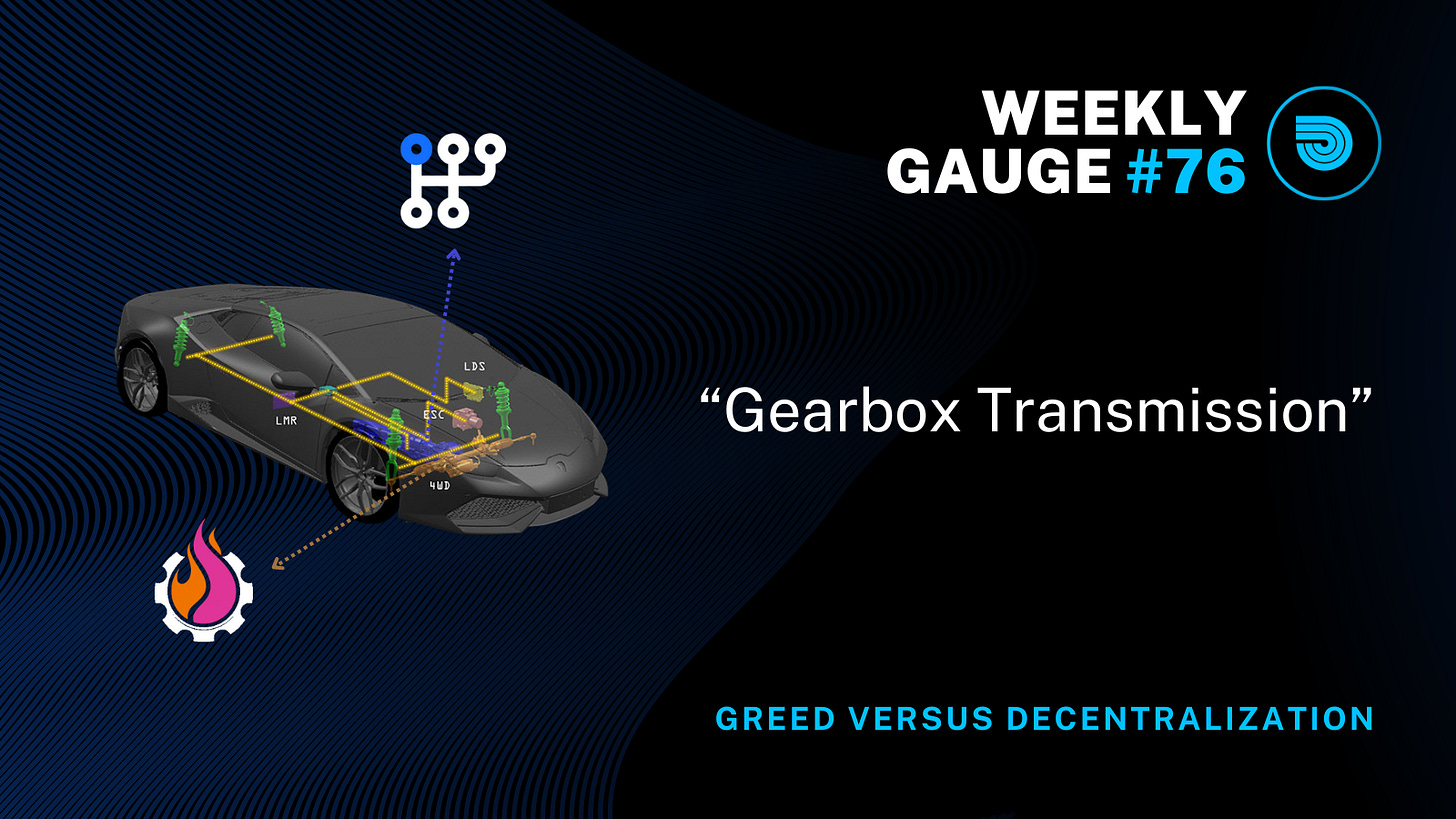With the recent launch of Transmission, a vote market by Paladin for Gearbox dual-gauge governance system, influencing your favorite lending asset’s interest rate have never been so easy. This week let’s present how one would make the cheapest and most efficient leverage farming tool for DeFi most used products.
Gearbox
Gearbox Protocol uses Credit Account abstraction to bring together lending and prime brokerage in the same protocol. Lenders deposit assets to earn passive yield, while the leverage side users borrow these assets to create spot leverage positions, which can be used across DeFi.
A Credit Account is an isolated smart contract which contains both the user funds and the borrowed funds. This is where your leverage is. After you open an account, all the operations go through this account and the assets stay on it as well. Credit accounts are not deployed by users every time as separate smart contracts, but are "borrowed" from the protocol by users like if you were to get an Uber: you use a car and then give it back once finished. This way, the deployment costs are kept to zero for new users.
The protocol logic and contracts are displayed on Gearbox dApps via two different interface to better illustrate the various use cases of the project:
For margin trading: PURE app looks like a regular perps trading interface. You can select the pair, your leverage, slippage, and all the other important parameters.
For leverage farms: This can be considered the killer feature of Gearbox in the latest DeFi LRT point airdrop meta. By enabling farmers to access leverage on their LRT holdings and LPs, which is essential in a volume based farming campaign. Read more on the various aspects associated to this feature: https://blog.gearbox.fi/leverage-restaking-and-leverage-points/
Gearbox does not have its own order book or trading environment. The leverage you get - is used across multiple DeFi protocols and assets, any protocol can offer leverage to their users with the help of Gearbox, without modifying anything in their own architecture. They can even engage in the Gauge Wars by staking GEAR and making rates for their own protocol’s assets more competitive.
Lending assets interest rates are defined by two components:
Base rate: defined algorithmically, it mirrors the lending pool utilization, the lower the available liquidity and the higher the demand, then the higher the interest rate, and inversely.
Quota rate: game theory equilibrium between lenders and borrowers to achieve sustainable and efficient rates by isolating every market. Based on staked $GEAR token votes using a gauge model.
Governance driven interest rates
2.1 Lender vs borrowers (3;3)
The $GEAR token's role in defining quota rates incentivizes users to become token holders by giving them direct influence over their potential profits or costs. This creates a unique (3;3) game theory relationship between lenders and borrowers.
The (3;3) nature emerges as each strategy can benefit both parties:
If rates are too high, borrowing decreases, hurting lenders' yields.
If rates are too low, lending decreases, limiting borrowers' leverage options.
Balanced rates lead to higher liquidity and platform growth, benefiting all token holders.
Optimal collective behavior involves a dynamic equilibrium where rates adjust based on market conditions, facilitated by active governance participation. This can lead to a positive-sum game where the protocol's growth increases the value of $GEAR tokens, benefiting all holders regardless of their lender/borrower status.
2.2 Enhance predictability
The dual gauge and quota rate system in Gearbox enhances the predictability and sustainability of interest rates by introducing a governance layer to the traditional supply-demand dynamics. This system allows for epoch based, deliberate adjustments to interest rates, reducing volatility and improving forecasting for both lenders and borrowers.
Transmission, a Paladin franchise.
In DeFi gauge systems are often associated with vote markets, but who said it was exclusive to DEXs tokenomics. While the quota rate system introduces a number of game theoretical improvements to the calculation of interest rates on Gearbox, it however requires the voters to be rational to reach an optimal equilibrium, which we all know is rarely the case.
The coordination between players here is different than usual, in the way that the Gearbox gauge system isn’t inflationary for the underlying governance token $GEAR and because there are only two sides to the vote which reduces a lot the partition of outputs.
In this specific context, with a very limited granularity of options (Ninja or Lender), vote markets can really encourage the rationality of participants to accurately represent the demand and risks associated with every lending assets and offer most efficient APYs to both sides of the trade.
Same as Gearbox allows the engine to adapt its pace, Transmission ensures the power of the engine is evenly distributed to maintain a stable and sustainable velocity. The first Paladin franchise is set to complete the Gearbox flywheel by solving the game theoretical optimization problem through quantifiable incentives and fair value metrics.
To conclude, Gearbox's unique Credit Account abstraction, dual-gauge governance system, and the newly implemented vote market collectively create a robust ecosystem that balances the interests of lenders and borrowers while enhancing the efficiency and sustainability of interest rates. By introducing game theory elements and quantifiable incentives, Gearbox and Transmission are not just optimizing lending and borrowing processes, but are also paving the way for a more rational, predictable, and user-centric DeFi environment.





